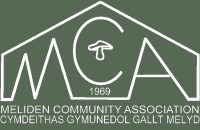Mr Edward Parry Describes the Parish in 1876
Assistant Overseer
‘I am Mr Edward Parry and I am employed as the Assistant Overseer for the Parish of Meliden by the St. Asaph Union, better known to you all as the Workhouse. My main responsibility is to look after paupers but I also collect the poor rates which support the Union, I keep a list of the men liable for jury service and all those entitled to vote in an election—which, of course, does not include women. I also supervise the maintenance of the graveyard, the putting out of fires and the impounding of any stray animals, for which I am entitled to the proceeds raised from selling the manure! I think that I know more about the villagers than anybody else.
Meliden Parish, but not as we know it today!
‘It might be helpful if I begin by describing the Parish of Meliden, which used to cover a larger area than at the present. As well as the village, the marshes and the seashore, it once embraced the whole of Prestatyn and the neighbouring Nant Estate which reaches to the edge of Gronant. Then, in 1860, Prestatyn and Nant, along with a small part of the Parish of Llanasa were transferred to create the new Parish of Prestatyn with a fine new church built on the High Street. Now Prestatyn has its own Parish Council and looks after itself, which is only right because the people of our two villages have never had much, if anything in common.
‘Meliden is not a single village but a number of hamlets, each with its own cluster of dwellings and individual identity. No one says, “I live in Meliden.” If you ask a person, they might reply that they live on the Rallt or perhaps the Maes. The Rallt, or more correctly, Tan yr allt is the land under the hillside near the parish quarry up at Tan yr Ogof and was common land until quite recently when Mr Dawson look advantage of the recent enclosure laws and fenced it off for himself to build new houses. The Maes is the upper part of the village beneath the railway warehouse, where, in the Middle Ages, people planted their crops using the ridge and furrow method in a field owned by the Lord of the Manor. All around the church is known as the Llan which is very ancient and rather mysterious. Even before the Romans arrived it was a burial mound and a place of Pagan worship. We still worship and bury our dead there and our church sits on the old mound. I live in one of the terraced houses owned by the mining company down at Cefn y Gwyrch which is half-way down the hill towards Penrhwylfa. We grow the best fruit and vegetables for miles around—and supply the hops for Meliden beer!
Meliden-on-Sea
‘In the gently sloping fields beneath the church is an ancient house called Llŷs yr Esgob. It was once the Bishop of St. Asaph’s favourite country residence and now the centre of the largest farm in the parish. As the land abruptly drops down after Pen y Bryn, we have Penrhwylfa which was a lookout in the old days because there was much to fear from Vikings and others who came in ships. The road over the Morfa leads to Meliden’s shore, known as Towyn because of the extensive sandhills protecting a handful of fishermen’s cottages and crofts.
Meliden, where Industry meets Farming and the Shore
‘You may have noticed that there is one place I have omitted to mention—and a most inhospitable place it is—Talargoch. It nestles beneath the red-stained rocks of Graig Fawr—though recent incomers to Prestatyn have started calling it Meliden Mountain! You would not choose to live at Talargoch because after centuries of mining, there is nothing there except vast piles of crushed limestone waste that the miners call smyddan. A single terrace of five cottages built by the Company are the only dwellings.
‘Fields of corn, contented cows, thriving market gardens, orchards and scented hop gardens intermingle with the steam engines, belching chimneys and piles of smyddan, making Meliden the main source of employment for miles around.’
‘The church is small, miserable, and dilapidated, plastered all over externally, of one pace, with a non-descript ruinous bell turret, and one bell at west, porch on the south, and a covered roof inside all modern.’
When William Leighton wrote that description in 1881, Meliden Church was in dire need of renovation. Victorian restorations were quite unlike anything we would contemplate today. We would be careful to conserve the fabric and furniture that had accrued over the centuries but they would often almost clear the building.
In 1884, the wonderful old three-decker pulpit which we would treasure along with the quaint old roof windows at the west end were removed—so were the box pews! Perhaps the greatest loss of all was the west gallery which is not visible in this photograph taken some time before 1884.
